They vary in size from about 15 centimeters to just over two meters. Large, colorful, light beaks are the hallmarks of toucans. These are noisy birds with their loud and raspy voices.
flying dragons
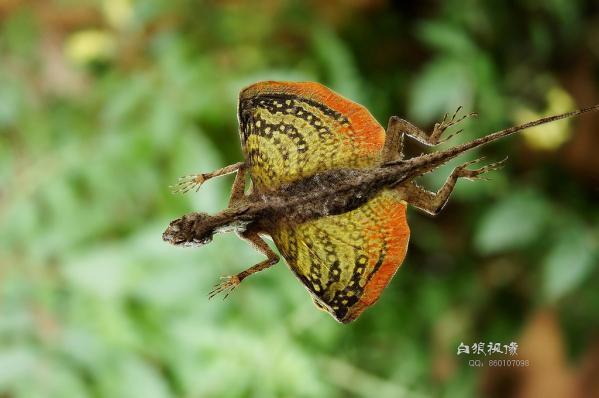
Tree lizards, so-called flying dragons, actually glide from tree to tree on their skin flaps, which look like wings. On each side of the body, between the fore and hind limbs, there is a large flap of skin supported by expanded movable ribs. Usually these "wings" are folded along the torsos, but they can open up to allow the lizard to glide for many meters in an almost horizontal state. The flying dragon feeds on insects, in particular ants. For reproduction, the flying dragon descends to the ground and lays 1 to 4 eggs in the soil.
Bengal tigers
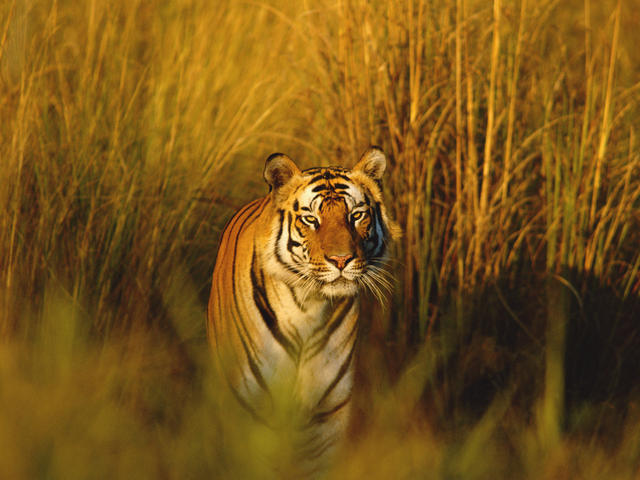
The Bengal tiger lives in the Sundarbans regions of India, Bangladesh, China, Siberia and Indonesia, and is seriously endangered. Today, about 4,000 individuals remain in the wild, while at the turn of the century in 1900 there were more than 50,000. Poaching and habitat loss are the two main reasons for the declining numbers of Bengal tigers. They have not been able to adapt to harsh conditions, despite their belonging to the dominant species. Tigers, also known as the Royal Bengal Tiger, which is a subspecies of the tiger, can be found in the Indian subcontinent. The Bengal tiger is the national animal of Bangladesh and is considered the second largest tiger in the world.
South American harpies
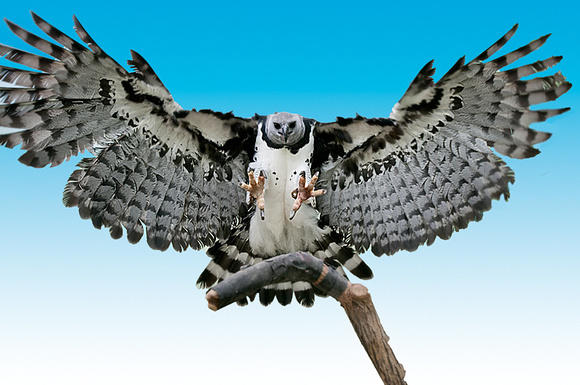
One of the largest and most powerful of the fifty species of eagles in the world, the South American harpy lives in the tropical lowland forests of Central and South America, from southern Mexico south to eastern Bolivia, and southern Brazil to northern Argentina. This is a disappearing view. The main threat to its existence is habitat loss due to constant deforestation, destruction of nesting and hunting grounds.
Dart frogs
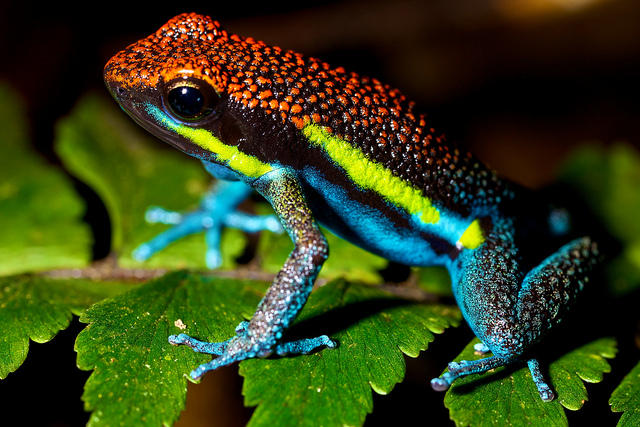
These are frogs found in Central and South America. They are known for their bright colors that warn other animals that they are poisonous. Frog venom is one of the most powerful poisons known and can cause paralysis or death. It is so powerful that one millionth of 30 grams of poison can kill a dog, and less than a crystal of salt can kill a human. One frog has a supply of poison sufficient to send up to 100 people to the next world. Local hunters used poison for their arrows, from where the frog gets its name in English Poison-Arrow Frog (poisoned arrow frog).
Sloths
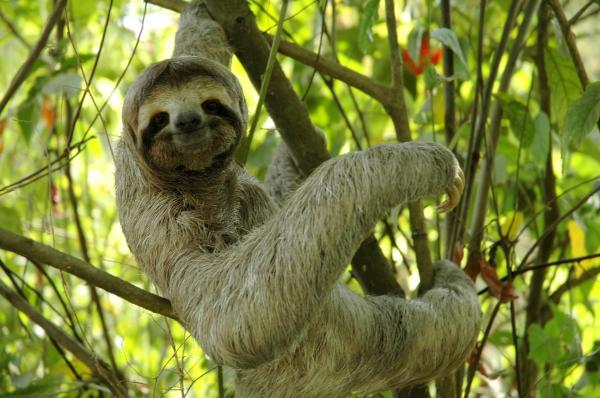
Sloths are extremely slow mammals that can be found in the rainforests of Central and South America. There are two types of sloths: two-toed and three-toed. Most sloths are about the size of a small dog. They have short, flat heads. Their fur is grey-brown, but sometimes they appear grey-green because they move so slowly that tiny camouflage plants have time to grow all over their fur. Sloths are nocturnal and sleep curled up with their heads between their arms and legs turned close together.
spider monkeys
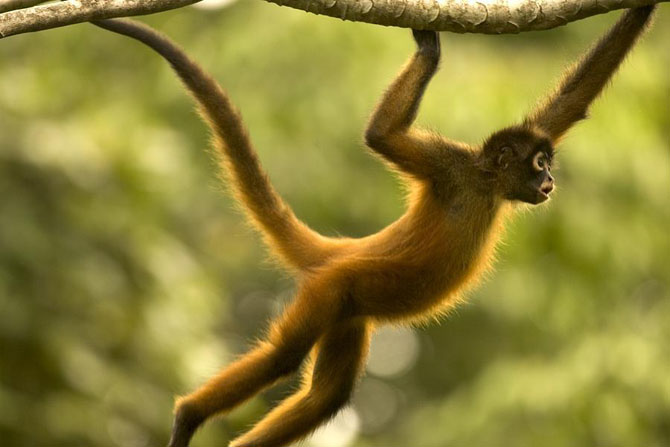
Spider monkeys are large. An adult monkey can grow to be almost 60 centimeters tall, not counting the tail. The tail is very powerful. Monkeys use it as an extra limb. Spider monkeys like to hang upside down, clinging to branches with their tail and paws, which makes them look like spiders, where they get their name from. Also, these monkeys can jump from branch to branch at high speed. Their coat color can be black, brown, gold, red or bronze. Spider monkeys are the object of close attention of hunters, which is why they are on the verge of extinction. This photo is probably your only chance to ever see this monkey. Not to mention our species...
wine snakes
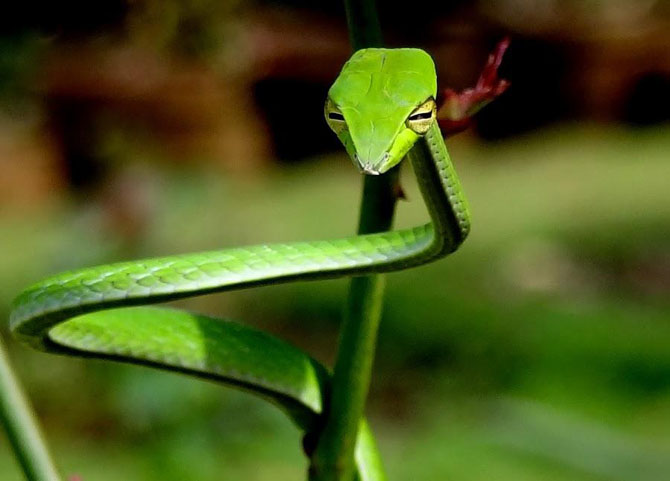
Only about a centimeter in diameter, wine snakes are a surprisingly "slim", elongated species. If the snake lies among the branches of forest trees, its proportions and green-brown color make it almost indistinguishable from dense creepers and vines. The head of a snake, just as thin and oblong. A slow-moving predator active during the day and at night, the wine snake feeds mainly on young birds, which it steals from nests, and on lizards. If the snake is threatened, it puffs up the front of its body, revealing the bright coloration that is normally hidden, and opens its mouth wide.
capybaras
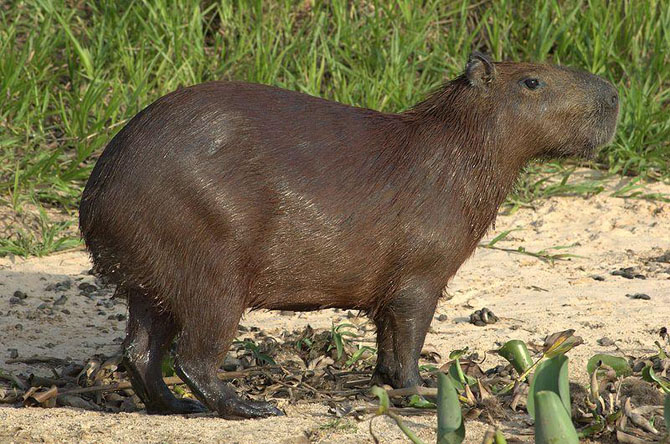
The capybara spends a lot of time in the water and is an excellent swimmer and diver. She has webbed toes on her front and hind feet. When she swims, only her eyes, ears and nostrils are visible above the water. Capybaras feed on plant foods, including aquatic plants, and these animals' molars grow throughout their lives to counteract wear and tear from chewing. Capybaras live in families and are active at dawn and dusk. In areas where they are often disturbed, capybaras may be nocturnal. Males and females look the same, but males have a gland on their nose that is larger than females. They mate in the spring, and after 15-18 weeks of pregnancy, there may be 2 babies in the litter. Babies are well developed at birth.
Brazilian tapirs
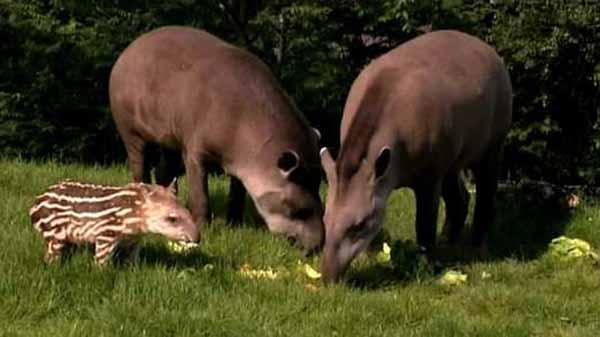
Brazilian tapirs can almost always be found near bodies of water. These animals are good swimmers and divers, but they also move quickly on land, even in rough and mountainous terrain. Tapirs are dark brown in color. Their coat is short, and a mane grows down from the back of the neck. Thanks to the mobile snout, the tapir feeds on leaves, buds, shoots and small branches that the tapir cuts off trees, as well as fruits, herbs and aquatic plants. The female gives birth to one spotted-striped baby after a pregnancy that lasts from 390 to 400 days.
